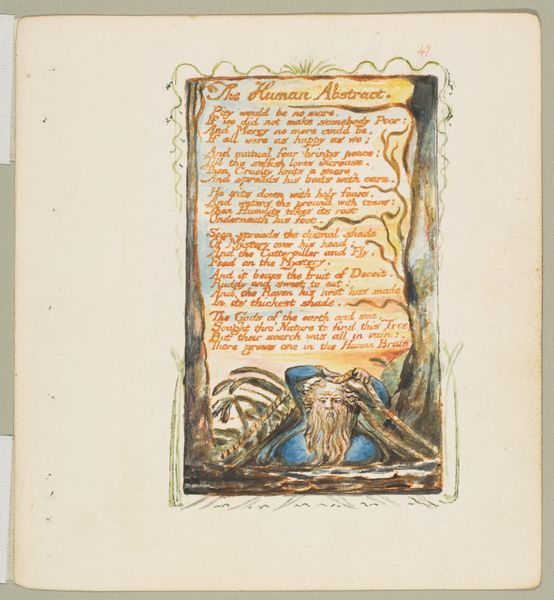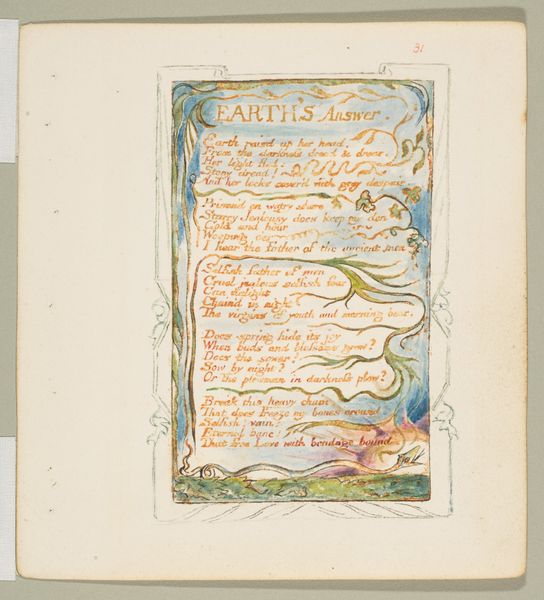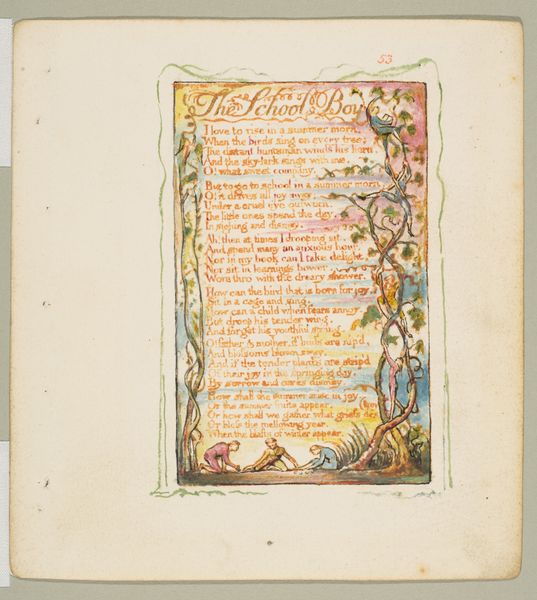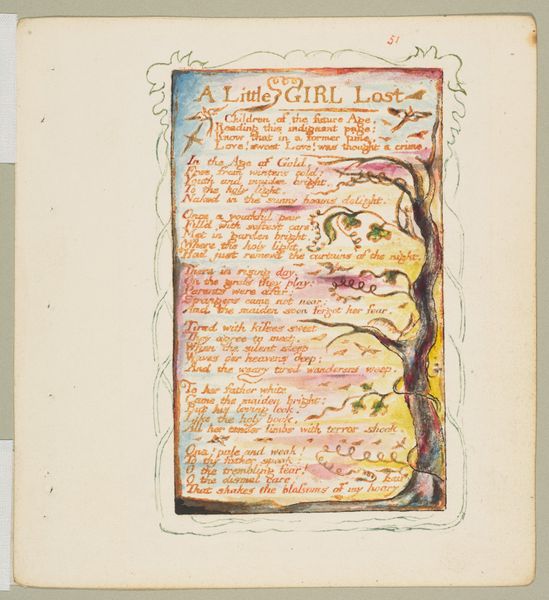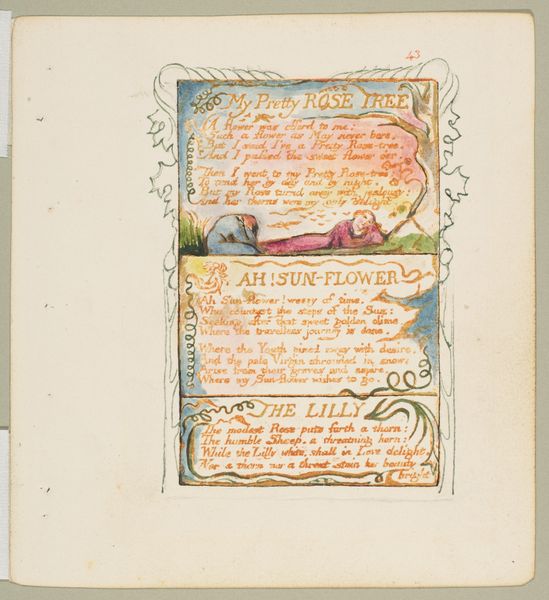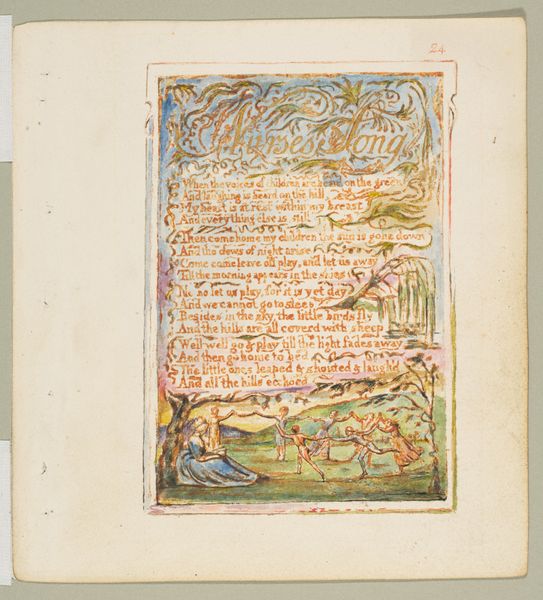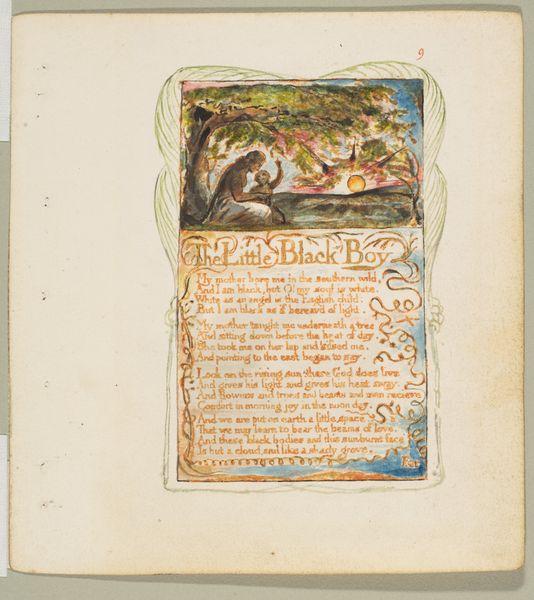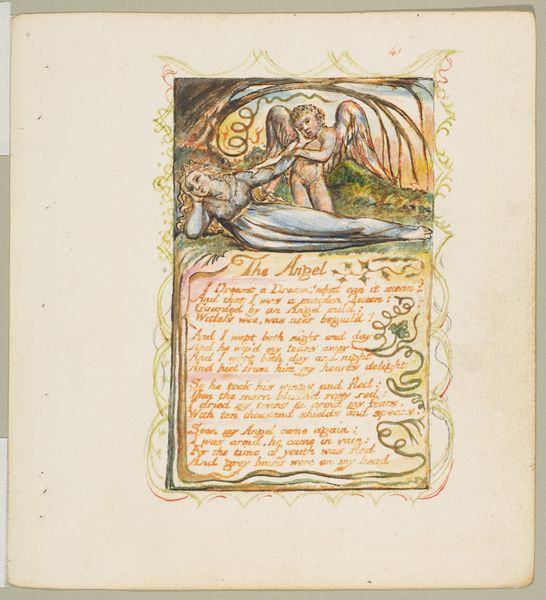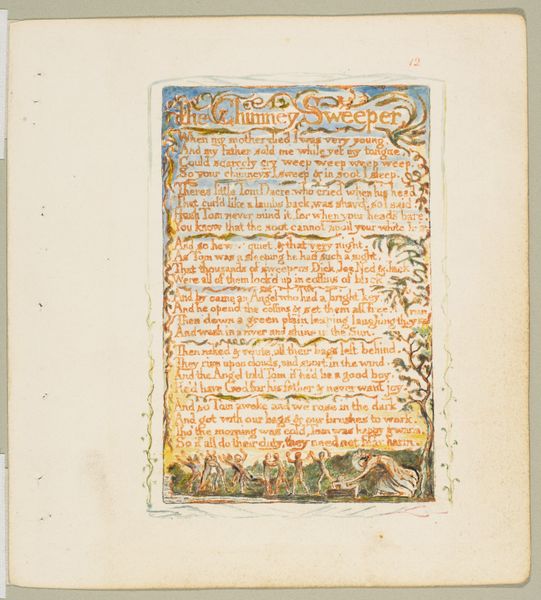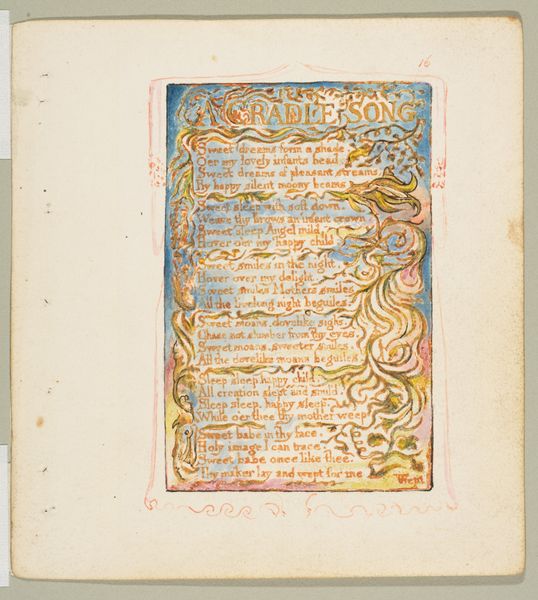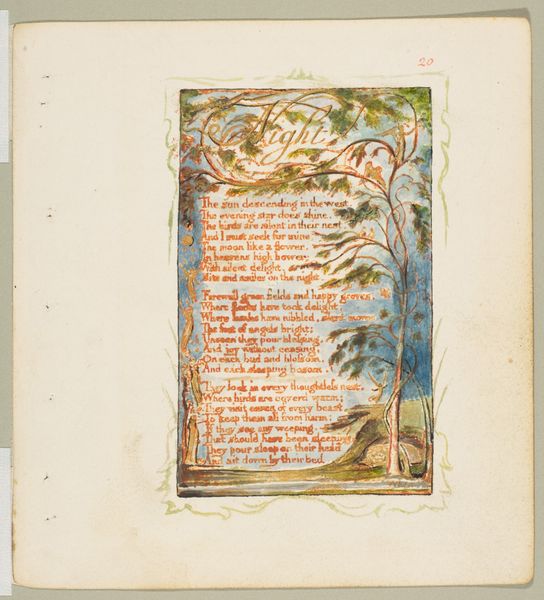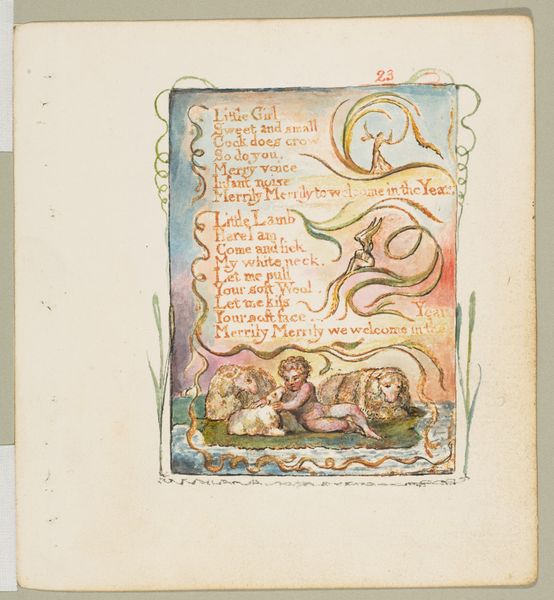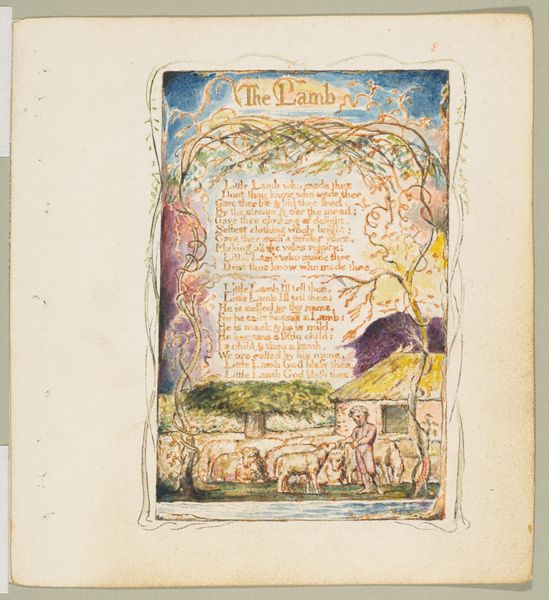
Dimensions: sheet: 6 3/16 x 5 9/16 in. (15.7 x 14.1 cm)
Copyright: Public Domain
Curator: Here we have William Blake's "Songs of Experience: A Little Boy Lost," created between 1794 and 1825. It's a miniature, combining print, ink, and watercolor on paper. Editor: It’s heartbreaking. The bottom panel depicts a group of figures huddled together, cloaked in sorrow, next to what looks like flames. There's a powerful sense of ritual or communal grief. Curator: Blake was deeply invested in the sociopolitical contexts of his time. Consider the implications of a "lost" boy within the structures of power. He challenges institutional authority and oppressive religious doctrines, specifically highlighting the vulnerability of children. The poem, integrated directly into the image, serves as a narrative of disillusionment, with the innocence of childhood confronting a corrupt and hypocritical adult world. Editor: The flames next to the kneeling figures also draw my attention. Fire is a potent and multivalent symbol; it purifies, it destroys. Is this a reference to burning at the stake, an auto-da-fé of some kind? The text above mentions an iron chain… It gives a frightening concreteness to what is also a psychological or spiritual torment. Curator: Precisely. Blake consistently employed symbolism to expose the fractures within societal frameworks, focusing particularly on themes of innocence and experience. His radical views championed individual freedom and challenged religious and political establishments that perpetuate social control. The chained boy functions as a critique of institutional power’s violation of autonomy. Editor: There's a duality presented so intensely. On one hand, there’s clear religious and parental imagery. The other suggests violence and repressed energy in those twisted vines throughout. It is fascinating how the poem acts like both narrative and visual cue that enhances and echoes Blake's intentions. Curator: Absolutely. Blake sought to ignite the viewer's consciousness, urging a critical reassessment of prevailing norms. In that regard, he speaks directly to us even now. Editor: Indeed, Blake creates such a dense iconography in a deceptively small format, so effectively. Curator: By layering these mediums he amplified his message in ways that allow for new critical engagements across the ages.
Comments
No comments
Be the first to comment and join the conversation on the ultimate creative platform.
